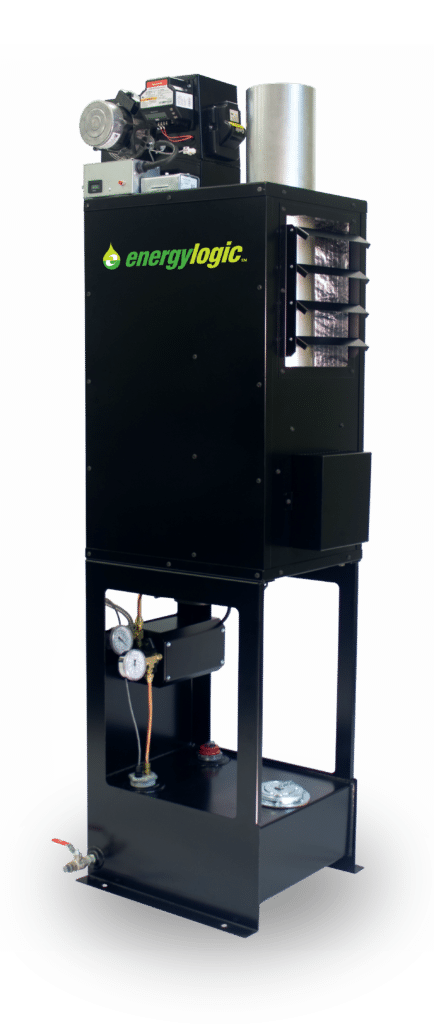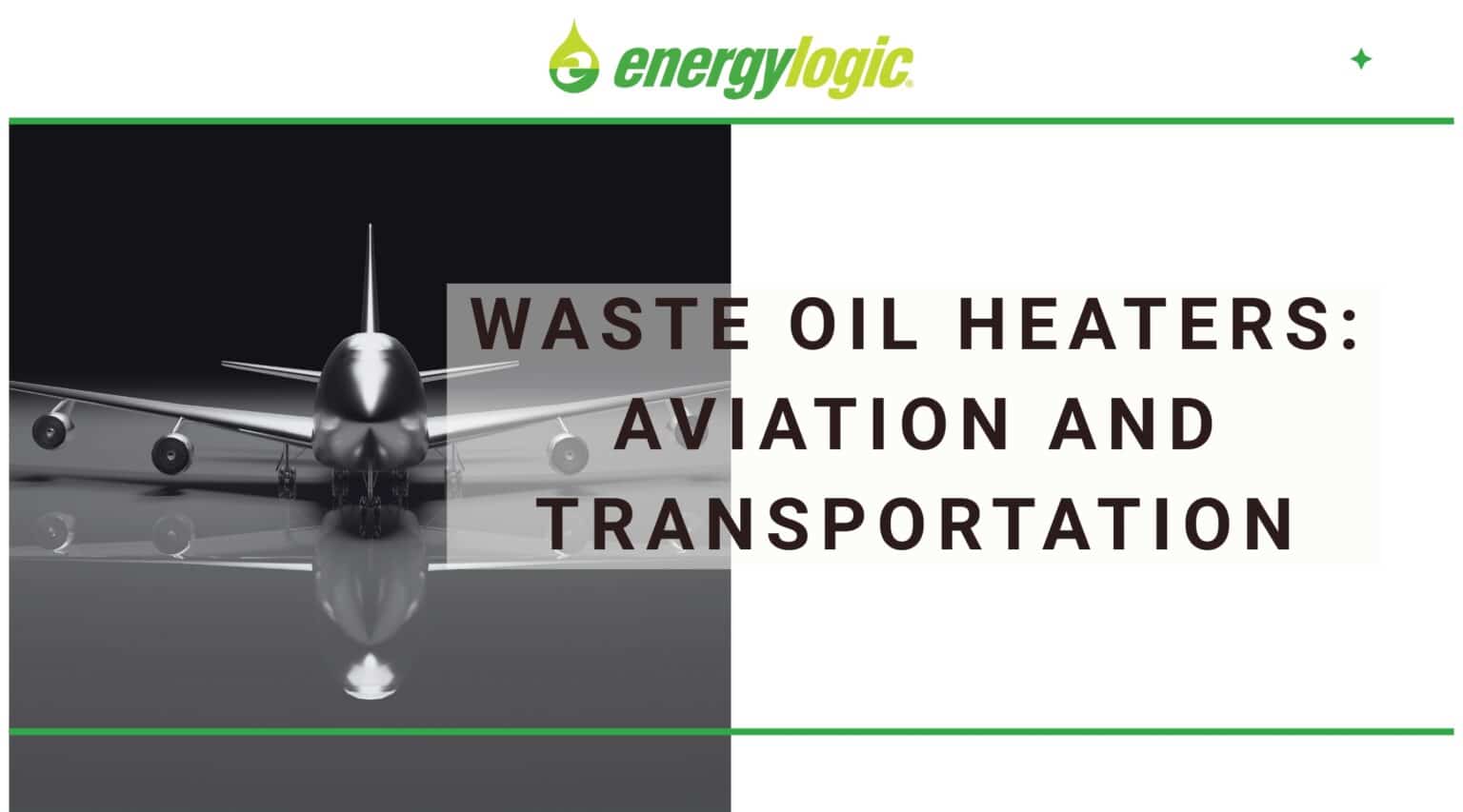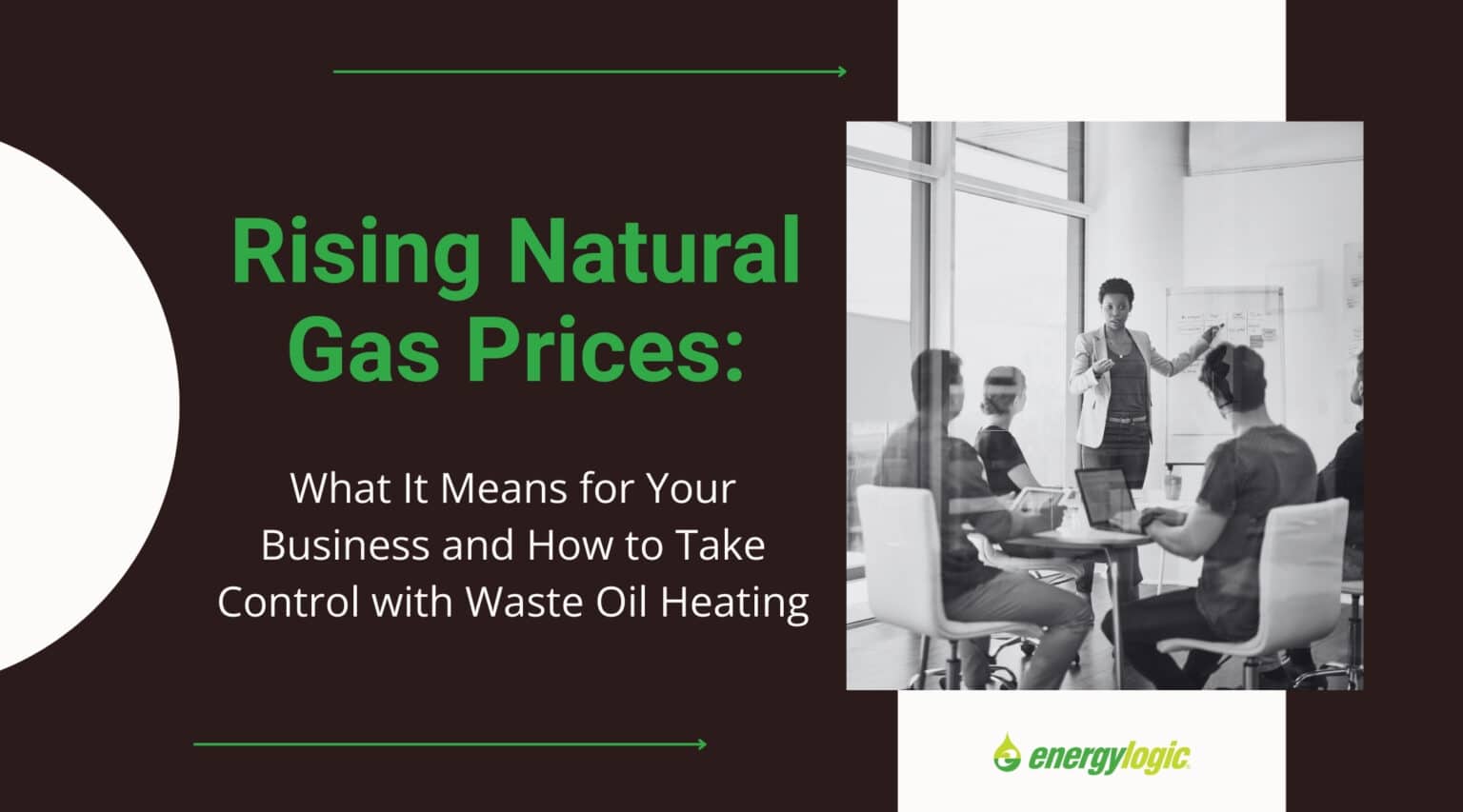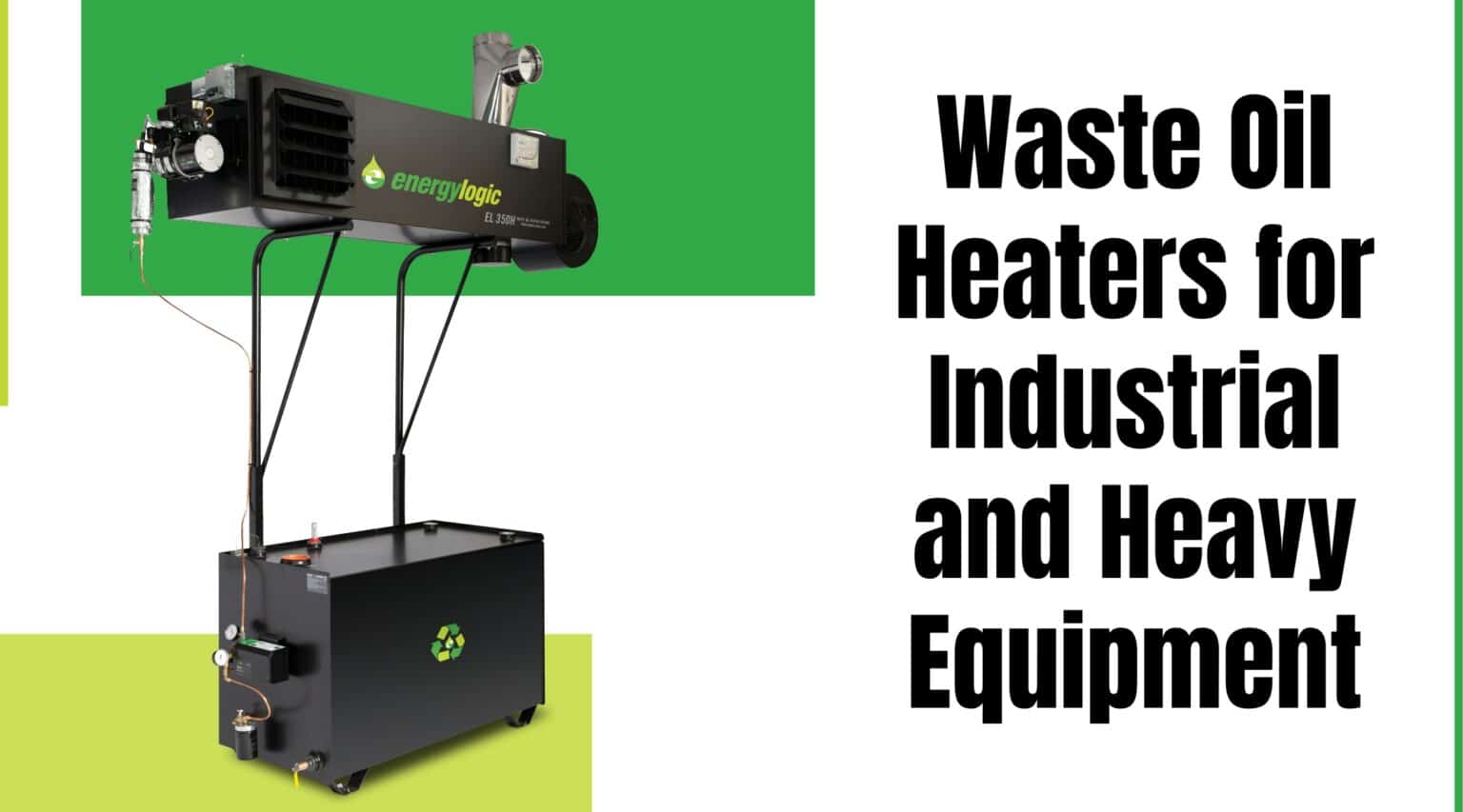Gone are the days when you would have to scrub the soot from the walls and ceilings close to your waste oil heater. These days, quality control in waste oil heaters is vital to their operation and the biggest manufacturers in the business spend countless hours ensuring the safety and efficacy of their heaters and boilers. When building a device that burns at extremely high temperatures for hours at a time and handles potentially hazardous materials, safety is paramount, for people and the environment. In this blog, we’ll dive into some of the regulations surrounding waste oil heaters and how EnergyLogic ensures that each waste oil heater or boiler that comes off the assembly line is of the highest quality.
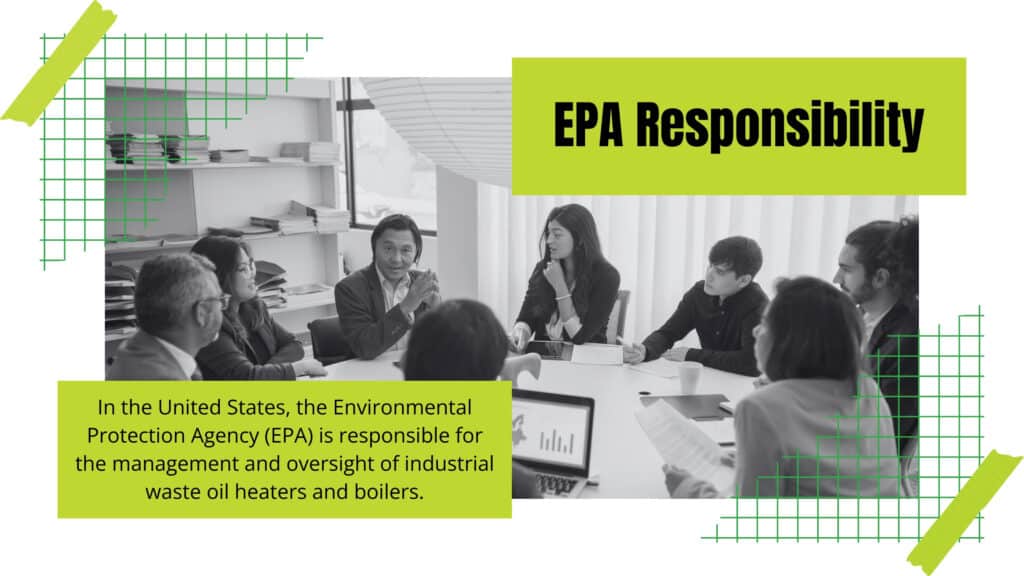
Quality Control Standards for Waste Oil Heaters and Boilers
In the United States, the Environmental Protection Agency (EPA) is responsible for the management and oversight of industrial waste oil heaters and boilers, like those produced by EnergyLogic. While the EPA does have general regulations, states and counties also sometimes provide more specific regulations around the burning of waste oil in heaters and boilers. Most states do not allow DIY burning of oil without equipment that can heat used oil to a certain temperature. For instance, the EPA states that used oil can be burned in a heater with an operating heat input equal to or less than 500,000 BTU/hour.
EnergyLogic’s largest operating heat input is 350,000 BTUs per hour, far lower than EPA restrictions. Heaters must also be vented to the outside without anything impeding the vent. This helps to protect the indoor environment while making it safe to burn used oil.
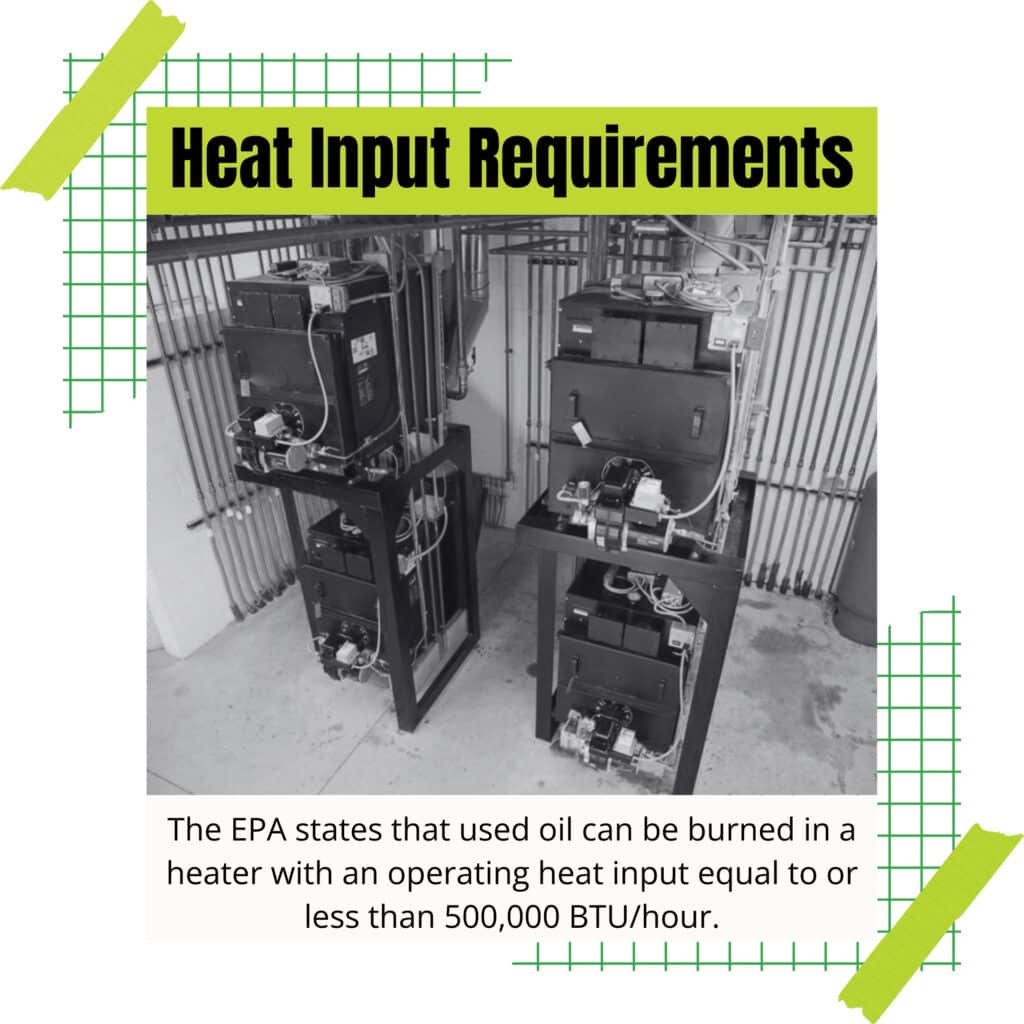
The EPA and states also require waste oil to be properly stored and labeled before use. With each waste oil boiler and heater produced, EnergyLogic ensures the strictest compliance with government and state regulations, however, the company has also elevated the gold standard for waste oil heaters by developing numerous innovations focused on quality.
EnergyLogic’s Quality Innovations in Waste Oil Heaters
When we set out to build the best waste oil heater in the industry, the standard was very low. We’ve delighted in raising the standard over the years, and some of our most impressive accomplishments include some of the following:
– Metering Fuel Pump – Allowing for reliable, consistent fuel delivery, no matter the fuel type, the metering fuel pump ensures owners do not have to make manual adjustments. When waste oil heaters first hit the market, owners would have to adjust the fuel pump based on the viscosity of the oil being burned, which was a big inconvenience.
– Patented Flame Retention Head – EnergyLogic’s flame design burns hotter, giving our customers the highest heat output possible and the longest maintenance interval as the hot flame incorporates more impurities, leaving less ash to clean.
– Low Fuel Cut Off – With a low-fuel cutoff, EL’s waste oil heaters and boilers will automatically shut off if the fuel gets too low, preventing equipment problems efficiently.
These three innovations together make EnergyLogic’s waste oil heaters and boilers some of the best in the industry by shortening the maintenance cycle and allowing customers to burn the widest range of oils. It has also helped improve the overall quality and standards of waste oil heaters.
The Importance of Equipment Maintenance
EnergyLogic’s waste oil boilers and heaters require far less maintenance than competitors’ versions and it is much easier to complete. When you burn waste oil, the impurities that do not get burned away have to be removed as does the ash.
Some owners prefer to complete maintenance themselves while others prefer to have their dealer service their waste oil boiler or heater and ensure everything is working correctly.
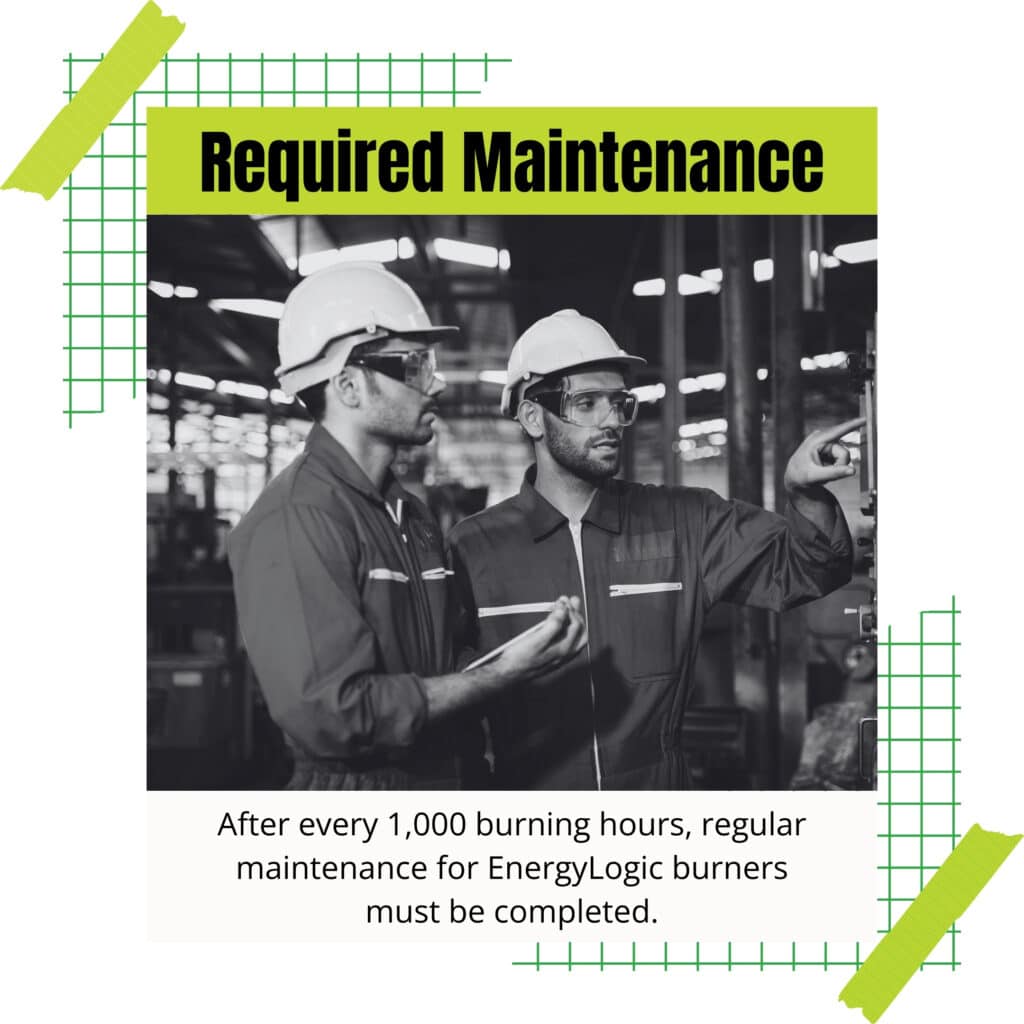
After every 1,000 burning hours, regular maintenance for EnergyLogic burners is completed. This process is vital to ensuring the safety and efficacy of your waste oil burner.
Best Practices for Waste Oil Heating
Waste oil generators have to follow certain procedures to ensure that they are handling and processing their waste oil correctly. Proper handling starts with the collection and storage of waste oil in suitable, leak-proof containers that are clearly labeled. It is essential to avoid mixing waste oil with other contaminants to maintain its quality for heating purposes.
Regular maintenance and inspection of storage containers and heating equipment are crucial to prevent spills and leaks. Additionally, waste oil heaters should be operated according to the manufacturer’s instructions to ensure efficient combustion and minimize emissions.
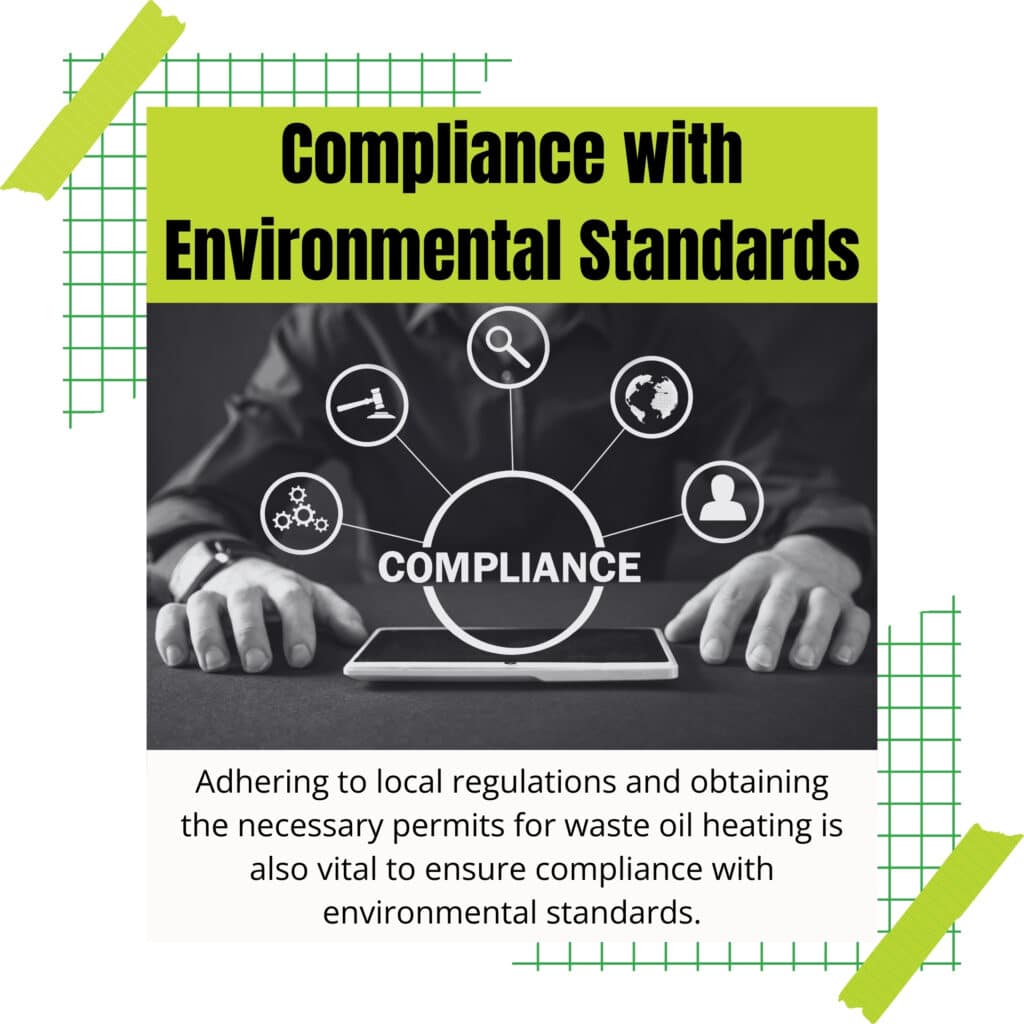
Adhering to local regulations and obtaining the necessary permits for waste oil heating is also vital to ensure compliance with environmental standards. By implementing these best practices, waste oil generators can safely and effectively utilize their waste oil as a valuable energy resource while protecting the environment.
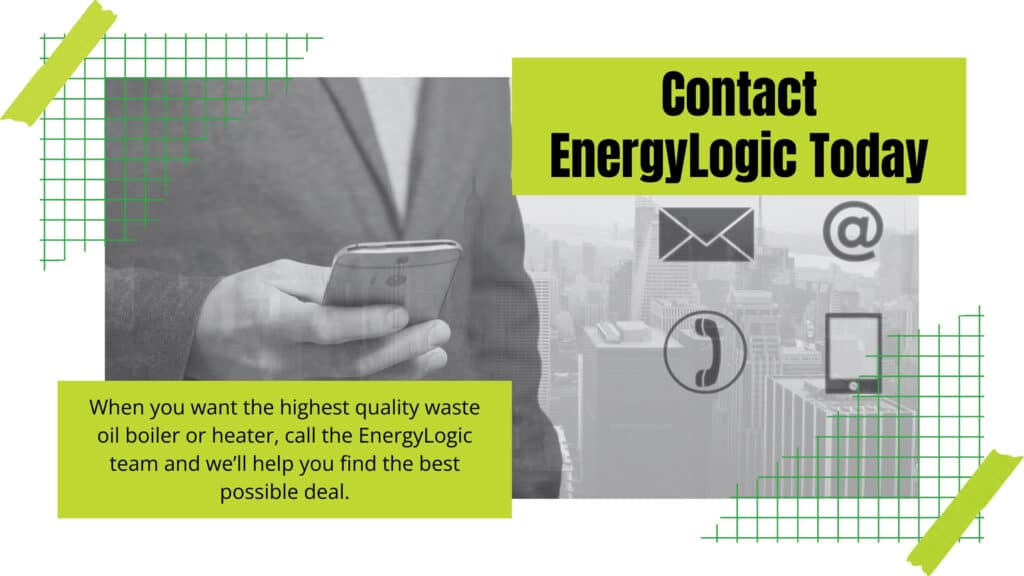
When you want the highest quality waste oil boiler or heater, call the EnergyLogic team and we’ll help you find the best possible deal.

